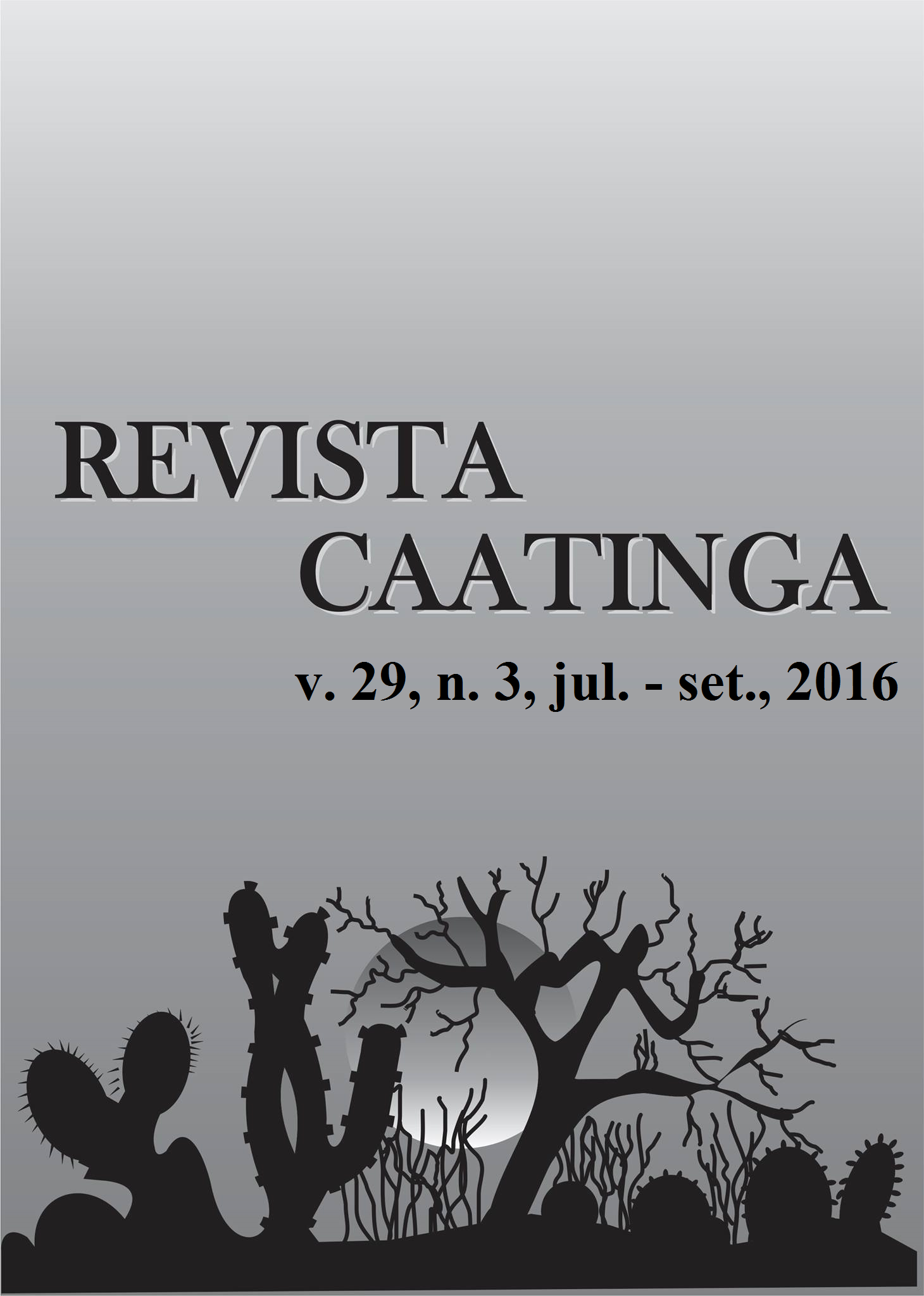MECHANICAL HARVESTING OF COFFEE IN HIGH SLOPE
DOI:
https://doi.org/10.1590/1983-21252016v29n319rcKeywords:
Modified harvesters. Steep-sloping relief. Mechanization.Abstract
Brazilian coffee farming is carried out both on flat and steep lands. In flat areas, mechanized operations are intensive; however, in steep slope areas, certain mechanized operations cannot be performed, such as harvesting. Based on this, the industry has developed machinery to harvest coffee in areas with up to 30% slope. However, harvesters have their efficiency and operational performance influenced by land slope. Thus, this study aimed to evaluate the operational performance and harvesting efficiency of a steep-slope harvester under different situations, using different speed settings. The experiment was carried out in the county of Santo Antônio do Amparo, state of Minas Gerais, Brazil, using five coffee stands with 10, 15, 20, 25 and 30% slope. Evaluations were performed with a self-propelled harvester (Electron, TDI®, Araguari, MG, Brazil) at three rotation speeds (600, 800 and 1.000 rpm) and two ground speeds (800 and 1.000 m h-1). The results showed the lower speed (800 m h-1) was suitable for 10% slope areas since the amount of fallen coffee berries. For areas of 20% slope, harvesting time was 21.6% longer than in flatter areas. Downtime varied from 10.66 to 29.18% total harvest due to a higher number of maneuvers.Downloads
References
CÁRDENAS, E. L. M.; TASCÓN, C. E. O.; MEJÍA, F. A. A portable device to assist in the harvest of coffee in Colombia. Revista da Faculdade Nacional de Agronomia de Medellín, Medellín, v. 68, n. 1, p. 7471-7479, 2015.
CONAB - COMPANHIA NACIONAL DE ABASTECIMENTO. Indicadores agropecuários. Disponível em: http://www.conab.gov.br. Acesso em: 10 mar. 2014.
Da MATTA, F. M. et al. Ecophysiology of coffee growth and production. Brazilian Journal Plant Physiology, Campos dos Goytacazes, v. 19, n. 4, p. 485-510, 2007.
FERREIRA, D. F. Sisvar: a computer statistical analysis system. Ciência e Agrotecnologia, Lavras, v. 35, n. 6, p. 1039-1042, 2011.
KÖEPPEN, W. Climatologia: con um estúdio de los climas de la Tierra. México: Fondo de Cultura Economica, 1948. 478 p.
LANNA, G. B. M.; REIS, P. R. Influência da mecanização da colheita na viabilidade econômico-financeira da cafeicultura no sul de Minas Gerais. Coffee Science, Lavras, v. 7, n. 2, p. 110-121, 2012.
MATIELLO, J. B. et al. Cultura de café no Brasil: Novo Manual de Recomendações. Rio de Janeiro e Varginha: MAPA/PROCAFÉ, 2010. 542 p.
MEJÍA, F. A.; TASCÓN, C. E. O.; URIBE, J. R. S. Evaluation of mechanical beaters in coffee harvesting. Revista da Faculdade Nacional de Agronomia de Medellín, Medellín, v. 66, n. 1, p. 6919-6928, 2013.
OLIVEIRA, E. et al. Influência da vibração das hastes e da velocidade de deslocamento da colhedora no processo de colheita mecanizada do café. Engenharia Agrícola, Jaboticabal, v. 27, n. 3, p. 714-721, 2007a.
OLIVEIRA, E. et al. Custos operacionais da colheita mecanizada do cafeeiro. Pesquisa Agropecuária Brasileira, Brasília, v. 42, n. 6, p. 827-831, 2007b.
SANTINATO, F. et al. Número de operações mecanizadas na colheita do café. Ciência Rural, Santa Maria, v. 45, n. 10, p. 1809-1814, 2015a.
SANTINATO, F. et al. Análise econômica da colheita mecanizada do café utilizando repetidas operações da colhedora. Coffee Science, Lavras, v. 10, n. 4, p. 402-4011, 2015b.
SANTINATO, F. et al. Análise quali-quantitativa da operação de colheita mecanizada de café em duas safras. Coffee Science, Lavras, v. 9, n.4, p. 495-505, 2014a.
SANTINATO, F. et al. Efeitos fisiológicos na cultura do café decorrentes da utilização de uma a seis passadas da colhedora. In: CONGRESSO BRASILEIRO DE PESQUISAS CAFEEIRAS,39., 2014, Serra Negra. Anais... Serra Negra: MAPA/PROCAFÉ, 2014b. p. 204-207.
SILVA, F. C. et al. Desempenho operacional da colheita mecanizada e seletiva do café em função da força de desprendimento dos frutos. Coffee Science, Lavras, v. 8, n. 1, p. 53-60, 2013.
SILVA, F. M. et al. Efeitos da colheita manual na bienalidade do cafeeiro em Ijací, Minas Gerais. Ciência e Agro tecnologia, Lavras, v. 34, n. 3, p. 625-632, 2010.
SILVA, F. M. et al. Potencialidade de mecanização da região sul e sudoeste de minas gerais, visando a lavoura cafeeira. In SIMPÓSIO DE PESQUISA DOS CAFÉS DO BRASIL, 6., 2009, Vitória. Anais... Vitória: EMBRAPA, 2009. p. 1-6.
Downloads
Published
Issue
Section
License
Os Autores que publicam na Revista Caatinga concordam com os seguintes termos:
a) Os Autores mantêm os direitos autorais e concedem à revista o direito de primeira publicação, com o trabalho simultaneamente licenciado sob a Licença Creative Commons do tipo atribuição CC-BY, para todo o conteúdo do periódico, exceto onde estiver identificado, que permite o compartilhamento do trabalho com reconhecimento da autoria e publicação inicial nesta revista, sem fins comerciais.
b) Os Autores têm autorização para distribuição não-exclusiva da versão do trabalho publicada nesta revista (ex.: publicar em repositório institucional ou como capítulo de livro), com reconhecimento de autoria e publicação inicial nesta revista.
c) Os Autores têm permissão e são estimulados a publicar e distribuir seu trabalho online (ex.: em repositórios institucionais ou na sua página pessoal) a qualquer ponto antes ou durante o processo editorial, já que isso pode gerar alterações produtivas, bem como aumentar o impacto e a citação do trabalho publicado (Veja O Efeito do Acesso Livre).







